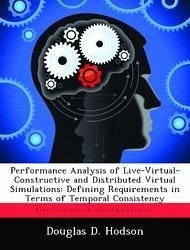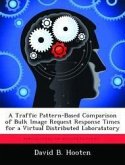This research extends the knowledge of live-virtual-constructive (LVC) and distributed virtual simulations (DVS) through a detailed analysis and characterization of their underlying computing architecture. LVCs are characterized as a set of asynchronous simulation applications each serving as both producers and consumers of shared state data. In terms of data aging characteristics, LVCs are found to be first-order linear systems. System performance is quantified via two opposing factors; the consistency of the distributed state space, and the response time or interaction quality of the autonomous simulation applications. A framework is developed that defines temporal data consistency requirements such that the objectives of the simulation are satisfied. Additionally, to develop simulations that reliably execute in real-time and accurately model hierarchical systems, two real-time design patterns are developed: a tailored version of the model-view-controller architecture pattern along with a companion Component pattern. Together they provide a basis for hierarchical simulation models, graphical displays, and network I/O in a real-time environment. For both LVCs and DVSs the relationship between consistency and interactivity is established by mapping threads created by a simulation application to factors that control both interactivity and shared state consistency throughout a distributed environment.
Bitte wählen Sie Ihr Anliegen aus.
Rechnungen
Retourenschein anfordern
Bestellstatus
Storno








